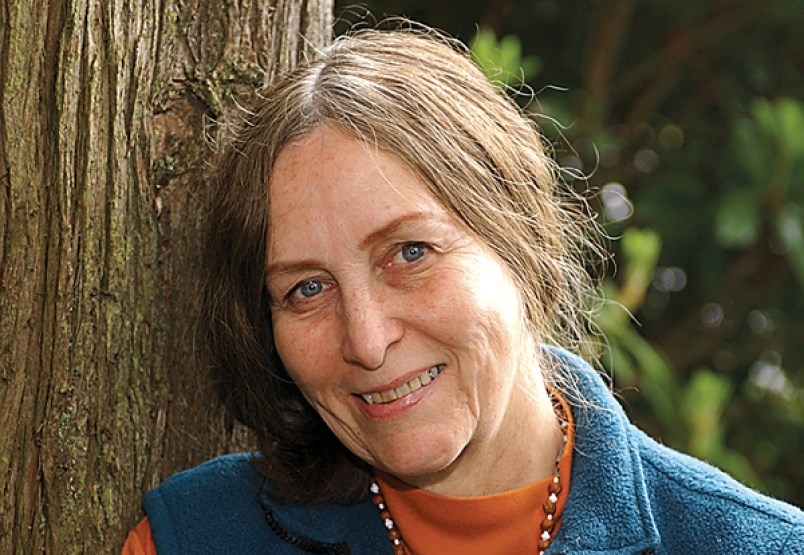The so-called Climate Leadership Plan quietly released by the B.C. government in mid August was anything but an example of leadership.
Instead, this plan was a complete abandonment of the sensible plan adopted in 2007 by then premier Gordon Campbell.
By now, we should all be aware that runaway global warming portends nothing but catastrophe for future generations, with severe weather changes and increasing drought, which could lead to civic strife and social unrest.
It’s certainly not a scenario we should be wishing upon our children and grandchildren if we truly care for them. Effective action and true leadership are urgently needed.
In 2007, total greenhouse gas (GHG) emissions in B.C. stood at 66 Mt (million tonnes). The Campbell plan was to reduce this to 44 Mt by 2020 and then down to 13 Mt by 2050.
We were reasonably successful in achieving a reduction especially when the B.C. government introduced a carbon tax and other programs in 2008. For a short time, our GHG emissions decreased in B.C. During the initial phase of the carbon tax, per capita consumption of fuel in B.C. fell by 16% even though fuel consumption increased 3% in the rest of Canada.
Then, Premier Christy Clark froze the carbon tax in 2011 and our GHG emissions began to climb again. Nonetheless, we are still 6% below 2007 emissions but we are not close to achieving the targeted 2020 reduction.
And what exactly accounts for all our GHG emissions in B.C.?
About 20% of them come from you and me, with about two thirds coming from transportation and one third for heating the buildings in which we live.
Another 20% comes from forestry, mining and other industries while fossil fuel industries alone contribute an additional 20%.
Commercial transport and buildings contribute 28% while simply dealing with our waste generates another 8%.
The final 5% of our GHG emissions come from deforestation due to forest fires and loss of the carbon-storage capacity of forests when they are logged. Half of this is apparently offset when trees are replanted but it takes decades before the carbon storage capacity of a mature tree is regained.
The new Climate Leadership Plan simply eliminates the 2020 goalposts and instead, substitutes a plan to achieve a reduction down to only 41 Mt by 2050. Thus, commitments made in the 2008 plan have vanished into thin air.
Rather than invest in new public transit initiatives, the government instead promises to reduce the emissions associated “with idling” by building a new George Massey bridge at an estimated cost of $3.5 billion.
Spending this money on new public transit would be far more effective at reducing transportation emissions instead of encouraging more dependence on cars by building one very expensive bridge. The new bridge will also support a massive increase in tanker traffic in the lower Fraser River — and this is thought by many to be the true rationale behind its construction.
It’s also strange that almost half of the proposed reduction in emissions by 2050 is intended to come from only the forest industry and agriculture. Is the intention of government to plant trees but no longer harvest them?
The new plan is also strangely silent about the future of the carbon tax except that it will remain frozen until 2018. Increasing the carbon tax would be an extremely effective way to reduce our emissions — especially if it were finally applied to all carbon emissions. Right now, the fossil fuel industry gets significant breaks on the carbon tax even while schools and hospitals pay it. Applying the carbon tax to all GHG emissions instead of the 70% now covered would have been a fair, significant and long overdue improvement.
To my mind, a future role for the liquefied natural gas industry in B.C. is very questionable given our need to reduce GHG emissions. Cooling natural gas to a liquid for shipping is a hugely energy-intensive process. The proposed Pacific Northwest LNG plan would emit 9.2 Mt of GHG annually — and that’s just one plant. The B.C. government is suggesting these LNG plants could, instead, use electricity generated at Site C for gas compression. This implies BC Hydro would be spending $10 billion to build Site C to mainly subsidize the natural gas industry in B.C.
It’s not surprising many people in B.C. are opposed to LNG — expanding this industry is not compatible with an effective climate action plan.
B.C.’s new Climate Leadership Plan is nothing more than smoke and mirrors. Subsidies to the fossil fuel industry will continue, emissions will continue to rise. There is no plan for effective actions to reduce GHG emissions to the level we need to achieve by 2020 or even by 2050.
Taking a variety of actions to minimize global warming is the most pressing issue of our times. If this government cannot produce a credible climate action plan, maybe it’s time for a new government.
Elaine Golds is a Port Moody environmentalist who is president and conservation chair of the Burke Mountain Naturalists, and member of the boards of the Colony Farm Park Association and the Port Moody Ecological Society.



